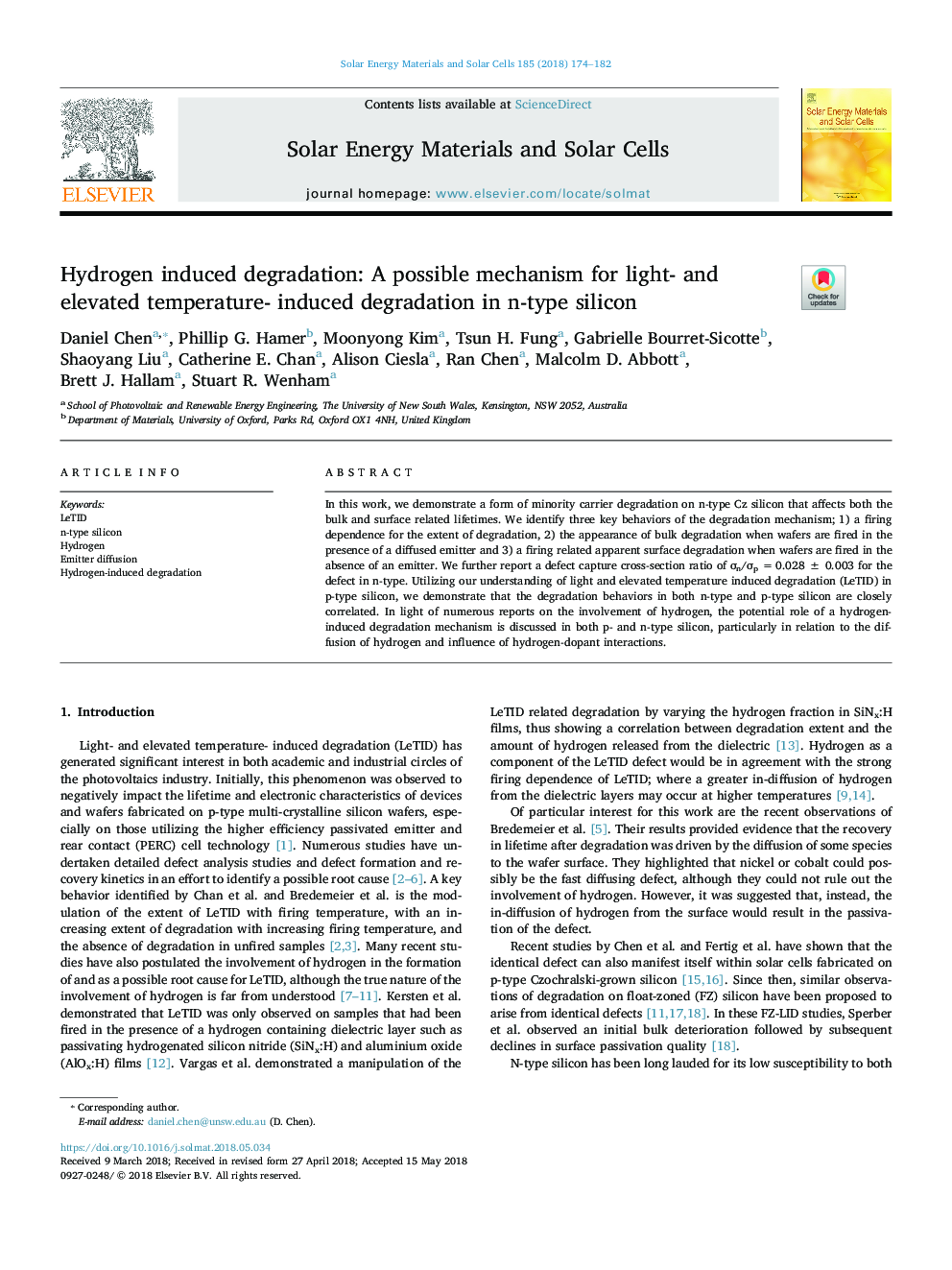| Article ID | Journal | Published Year | Pages | File Type |
|---|---|---|---|---|
| 6534007 | Solar Energy Materials and Solar Cells | 2018 | 9 Pages |
Abstract
In this work, we demonstrate a form of minority carrier degradation on n-type Cz silicon that affects both the bulk and surface related lifetimes. We identify three key behaviors of the degradation mechanism; 1) a firing dependence for the extent of degradation, 2) the appearance of bulk degradation when wafers are fired in the presence of a diffused emitter and 3) a firing related apparent surface degradation when wafers are fired in the absence of an emitter. We further report a defect capture cross-section ratio of Ïn/Ïp =â¯0.028â¯Â±â¯0.003 for the defect in n-type. Utilizing our understanding of light and elevated temperature induced degradation (LeTID) in p-type silicon, we demonstrate that the degradation behaviors in both n-type and p-type silicon are closely correlated. In light of numerous reports on the involvement of hydrogen, the potential role of a hydrogen-induced degradation mechanism is discussed in both p- and n-type silicon, particularly in relation to the diffusion of hydrogen and influence of hydrogen-dopant interactions.
Keywords
Related Topics
Physical Sciences and Engineering
Chemical Engineering
Catalysis
Authors
Daniel Chen, Phillip G. Hamer, Moonyong Kim, Tsun H. Fung, Gabrielle Bourret-Sicotte, Shaoyang Liu, Catherine E. Chan, Alison Ciesla, Ran Chen, Malcolm D. Abbott, Brett J. Hallam, Stuart R. Wenham,
